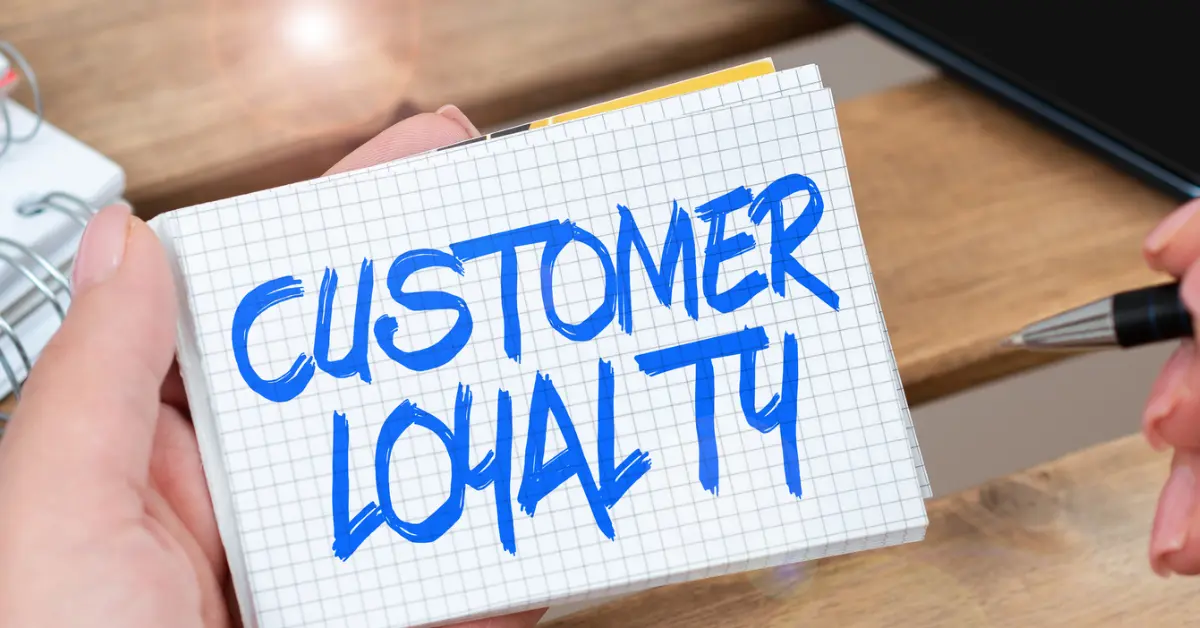Incentive marketing is a type of marketing strategy that involves offering rewards or incentives to motivate customers to take a specific action. This could be anything from making a purchase to referring a friend to a business.
Incentive marketing has become increasingly popular in recent years, as businesses look for ways to stand out in a crowded market. In this article, we’ll explore the different types of incentive marketing and how businesses can use them to drive growth and engagement.
Table of Contents
- Introduction
- Why Use Incentive Marketing?
- Types of Incentive Marketing
- Discount Incentives
- Rebate Incentives
- Loyalty Programs
- Referral Programs
- Gamification
- Sweepstakes and Contests
- Free Gifts
- Cashback Incentives
- Bonus Point Programs
- How to Choose the Right Incentive
- Best Practices for Implementing Incentive Marketing
- Examples of Successful Incentive Marketing Campaigns
- Measuring the Success of Incentive Marketing
- Conclusion
- FAQs
1. Introduction
Incentive marketing is a powerful tool for businesses looking to increase customer engagement, loyalty, and sales. By offering customers a reward or incentive for taking a specific action, businesses can motivate customers to take the desired action and create a positive association with their brand.
Incentive marketing can take many forms, from discounts and rebates to loyalty programs and gamification.
2. Why Use Incentive Marketing?
Incentive marketing can be an effective way to stand out in a crowded market and differentiate your business from competitors.
It can also help to create a positive association with your brand, increase customer engagement and loyalty, and drive sales. By offering customers a reward or incentive, you’re giving them a reason to choose your business over others.
3. Types of Incentive Marketing
Discount Incentives
Discount incentives are one of the most common types of incentive marketing. They involve offering customers a discount on a product or service, usually as a percentage off the total price. Discount incentives can be an effective way to drive sales and encourage customers to try out new products or services.
Rebate Incentives
Rebate incentives involve offering customers a rebate or cashback on a product or service after they’ve made a purchase. This type of incentive can be particularly effective for high-ticket items or services, where customers may be hesitant to make a purchase without some kind of guarantee or reassurance.
Loyalty Programs
Loyalty programs are a type of incentive marketing that reward customers for their loyalty to a brand.
They typically involve offering customers points or rewards for making purchases or engaging with a brand in other ways. Loyalty programs can be an effective way to increase customer engagement and loyalty over the long term.
Referral Programs
Referral programs involve offering customers a reward or incentive for referring their friends or family members to a business. This type of incentive can be particularly effective for businesses that rely on word-of-mouth marketing or have a strong social media presence.
Gamification
Gamification involves incorporating game-like elements into marketing campaigns, such as points, levels, or badges. This type of incentive can be particularly effective for engaging younger audiences or those who are more tech-savvy.
Sweepstakes and Contests
Sweepstakes and contests involve offering customers the chance to win a prize in exchange for taking a specific action, such as making a purchase or sharing a post on social media. This type of incentive can be particularly effective for generating buzz and excitement around a product or service.
Free Gifts
Free gift incentives involve offering customers a free gift or sample with their purchase. This type of incentive can be an effective way to introduce customers to new products or services and create a positive association with your brand.
Cashback Incentives
Cashback incentives involve offering customers a cashback reward for making a purchase. This type of incentive can be particularly effective for high-ticket items or services, where customers may be looking for some kind of reassurance or guarantee.
Bonus Point Programs
Bonus point programs involve offering customers bonus points for making purchases or engaging with a brand in other ways.
These points can then be redeemed for rewards or incentives, such as discounts or free products. Bonus point programs can be an effective way to increase customer engagement and loyalty over the long term.
4. How to Choose the Right Incentive
Choosing the right incentive for your business will depend on a number of factors, including your target audience, budget, and marketing goals.
Some incentives may be more effective for certain types of customers or products than others.
For example, a loyalty program may be more effective for a business that sells products or services that customers use regularly, while a sweepstakes or contest may be more effective for generating buzz around a new product launch.
5. Best Practices for Implementing Incentive Marketing
When implementing incentive marketing, there are a number of best practices to keep in mind. These include:
- Clearly define your goals and objectives for the incentive marketing campaign.
- Choose incentives that are relevant and valuable to your target audience.
- Make sure the incentives are easy to understand and redeem.
- Promote the incentive marketing campaign across all channels, including social media, email, and in-store.
- Monitor and measure the success of the incentive marketing campaign and adjust as needed.
6. Examples of Successful Incentive Marketing Campaigns
There are many examples of successful incentive marketing campaigns across a range of industries. Some notable examples include:
- Starbucks Rewards: Starbucks’ loyalty program rewards customers with stars for every purchase, which can be redeemed for free drinks, food, and other perks.
- Dropbox: Dropbox offers users free storage space for referring their friends to the service.
- Sephora Beauty Insider: Sephora’s loyalty program rewards customers with points for every purchase, which can be redeemed for free products and other perks.
7. Measuring the Success of Incentive Marketing
Measuring the success of an incentive marketing campaign can be challenging, but there are a number of metrics that can be used to evaluate its effectiveness. These include:
- Conversion rates: The percentage of customers who take the desired action, such as making a purchase or referring a friend.
- Customer acquisition costs: The cost of acquiring a new customer through the incentive marketing campaign.
- Customer retention rates: The percentage of customers who continue to engage with the brand after taking advantage of the incentive.
- Return on investment (ROI): The financial return on the investment in the incentive marketing campaign.
8. Conclusion
Incentive marketing can be a powerful tool for businesses looking to increase customer engagement, loyalty, and sales.
By offering customers a reward or incentive, businesses can motivate customers to take the desired action and create a positive association with their brand.
There are many different types of incentive marketing, from discounts and rebates to loyalty programs and gamification, and choosing the right incentive will depend on a number of factors, including your target audience and marketing goals.
1. How do I know which incentive will be most effective for my business?
To determine which incentive will be most effective for your business, you should consider your target audience, their preferences, and what motivates them.You can conduct market research and surveys to gather this information.
Additionally, you should consider the cost and feasibility of each incentive option. It’s essential to test and track the effectiveness of each incentive you offer to determine which one generates the most engagement and conversions.
2. Can I use multiple incentives at once?
Yes, you can use multiple incentives at once. However, it’s crucial to ensure that they complement each other rather than competing against each other. For example, offering a discount code along with a free shipping offer can be effective in encouraging customers to make a purchase.
3. How do I measure the success of my incentive marketing campaign?
To measure the success of your incentive marketing campaign, you need to set specific goals and track key performance indicators (KPIs).
Some common KPIs include customer engagement, conversion rates, and revenue. Use analytics tools to monitor the performance of your campaign regularly and make adjustments as necessary.
4. Are there any legal considerations I should be aware of when implementing incentive marketing?
When implementing incentive marketing, it’s essential to comply with relevant laws and regulations.
For example, in some countries, offering cash incentives may be subject to tax laws, and you may need to report the incentives to the appropriate authorities.
Additionally, you should ensure that your marketing campaigns adhere to applicable consumer protection laws and regulations. It’s essential to consult with legal experts to ensure that your incentive marketing campaigns are legally compliant.
- How can I make sure my incentives are not perceived as bribes?
To ensure that your incentives are not perceived as bribes, it is important to be transparent and upfront about the conditions of the incentive.
Clearly communicate the terms and conditions of the incentive and ensure that customers are aware of any requirements, such as making a purchase or referring a friend. It is also important to make sure that the incentive is fair and does not disproportionately benefit certain customers or groups.
- Can I use incentive marketing for non-profit organizations?
Yes, incentive marketing can be used for non-profit organizations. Incentives can be used to encourage donations, volunteerism, and other forms of engagement with the organization.
For example, a non-profit organization could offer a free t-shirt or other gift to donors who contribute a certain amount or volunteer for a certain number of hours.
- How can I create a successful incentive marketing campaign on a limited budget?
One way to create a successful incentive marketing campaign on a limited budget is to focus on incentives that are low cost but high value to customers.
For example, offering a small discount or free gift with purchase can be an effective incentive that does not require a significant investment. It is also important to promote the campaign across all channels, including social media, email, and in-store, to maximize its reach.
- Can I use incentives to incentivize social media engagement?
Yes, incentives can be used to incentivize social media engagement, such as likes, comments, and shares. For example, a business could offer a discount or free gift to customers who share a post on social media or tag the business in a post.
- How do I ensure that my incentive marketing campaign is compliant with regulations and laws?
When implementing an incentive marketing campaign, it is important to be aware of any relevant regulations or laws, such as consumer protection laws or data privacy regulations. It is recommended to consult with legal professionals to ensure that your campaign is compliant and to avoid any potential legal issues.
In conclusion, incentive marketing can be an effective tool for businesses to increase customer engagement, loyalty, and sales. By choosing the right type of incentive and implementing best practices, businesses can create successful incentive marketing campaigns that benefit both the customer and the business.
However, it is important to be transparent and compliant with relevant regulations and laws to avoid any potential legal issues.




0 Comments